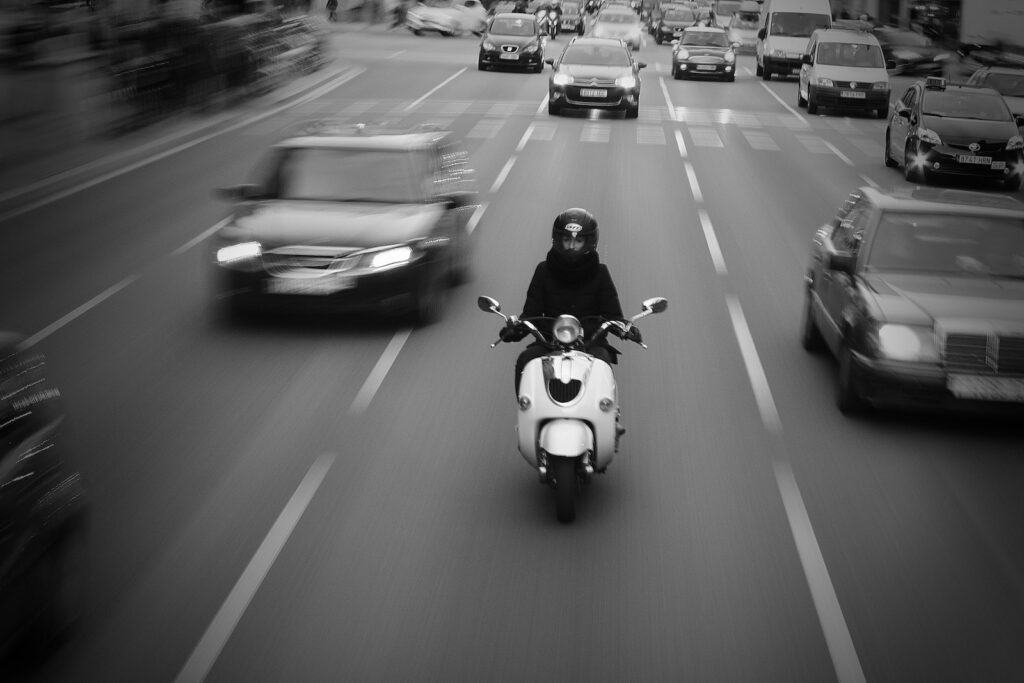Lane filtering is a motorcycle riding technique that has been gaining popularity in recent years. It involves a motorcyclist weaving between slower-moving traffic or traffic that is stationary. Lane filtering is often confused with lane splitting, but they are not the same thing. Lane splitting is when a motorcyclist rides between two lanes of moving traffic heading in the same direction.
Lane filtering is legal in some states in the US, including Arizona, Hawaii, Montana, and Utah. The benefits of lane filtering include reducing traffic congestion, decreasing travel time, and improving safety for motorcyclists. However, there are also concerns about the safety of lane filtering, particularly in states where it is not legal. Critics argue that lane filtering can be dangerous for both motorcyclists and other drivers and that it can lead to accidents and injuries.
Table of Contents
Understanding Lane Filtering
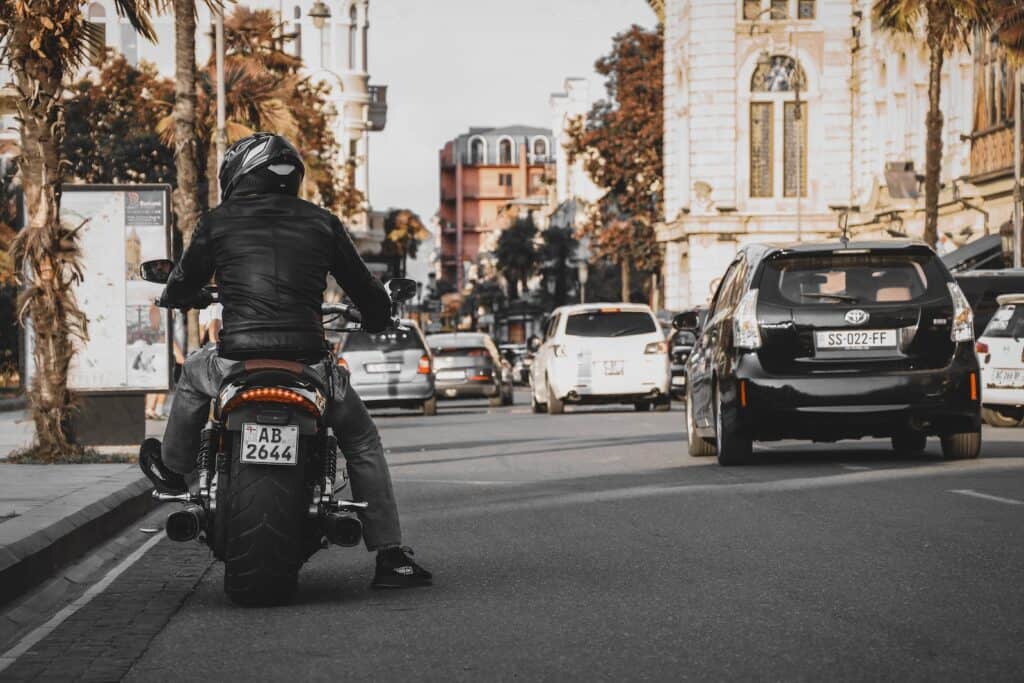
Lane filtering, also known as lane splitting, is a technique used by motorcyclists to safely navigate through slow-moving or stationary traffic. It involves riding between lanes or rows of vehicles on the right side of the lane, moving faster than the surrounding traffic. Lane filtering can be a legal maneuver in some states, while it is prohibited in others.
The primary purpose of lane filtering is to reduce congestion and improve traffic flow. It also helps motorcyclists to avoid being stuck in traffic, which can be dangerous as they are more vulnerable to accidents in such situations. However, lane filtering should only be done by experienced riders who have the necessary skills and knowledge to do it safely.
When filtering through traffic, motorcyclists should always be aware of their surroundings and exercise caution. They should filter only at low speeds and never exceed the speed limit. They should also be mindful of other road users, including pedestrians and cyclists, and avoid causing any inconvenience or danger to them.
Filtering between lanes can be dangerous if not done correctly. Motorcyclists should always be aware of the width of their motorcycle and ensure that there is enough space between the vehicles to avoid collisions. They should also be aware of the road surface conditions, as wet or slippery roads can increase the risk of accidents.
In conclusion, lane filtering can be a useful technique for motorcyclists to navigate through traffic safely and efficiently. However, it should only be done by experienced riders who have the necessary skills and knowledge to do it safely. Motorcyclists should always exercise caution and be aware of their surroundings when filtering through traffic.
Legal Status of Lane Filtering
Lane filtering is a practice where a motorcyclist rides between lanes of slow or stopped traffic. The legality of lane filtering varies depending on the state or country. In the United States, only a few states allow lane filtering (See list here), while it is illegal in others. However, in Europe and Canada, lane filtering is more widely accepted and practiced.
Legalization in Different States
As of August 2023, only a handful of states have legalized lane filtering. California was the first state to legalize lane filtering in 2016, but it is still subject to certain conditions. Utah followed suit in 2019 and became the second state to legalize lane filtering. In early 2021, Montana also enacted a law legalizing lane filtering. Virginia, Arizona, Oregon, Hawaii, and Washington are currently considering legalizing lane filtering.
In California, lane filtering is legal when traffic is moving at 30 mph or less and the motorcyclist does not exceed 10 mph faster than the surrounding traffic. Utah allows lane filtering only when traffic is moving at 45 mph or less, and the motorcyclist does not exceed 15 mph faster than the surrounding traffic. Montana’s law allows lane filtering only when traffic is stopped or moving at less than 20 mph.
In the states where lane filtering is illegal, motorcyclists who engage in this practice can face fines, penalties, and even license suspension.
Lane Filtering in Europe and Canada
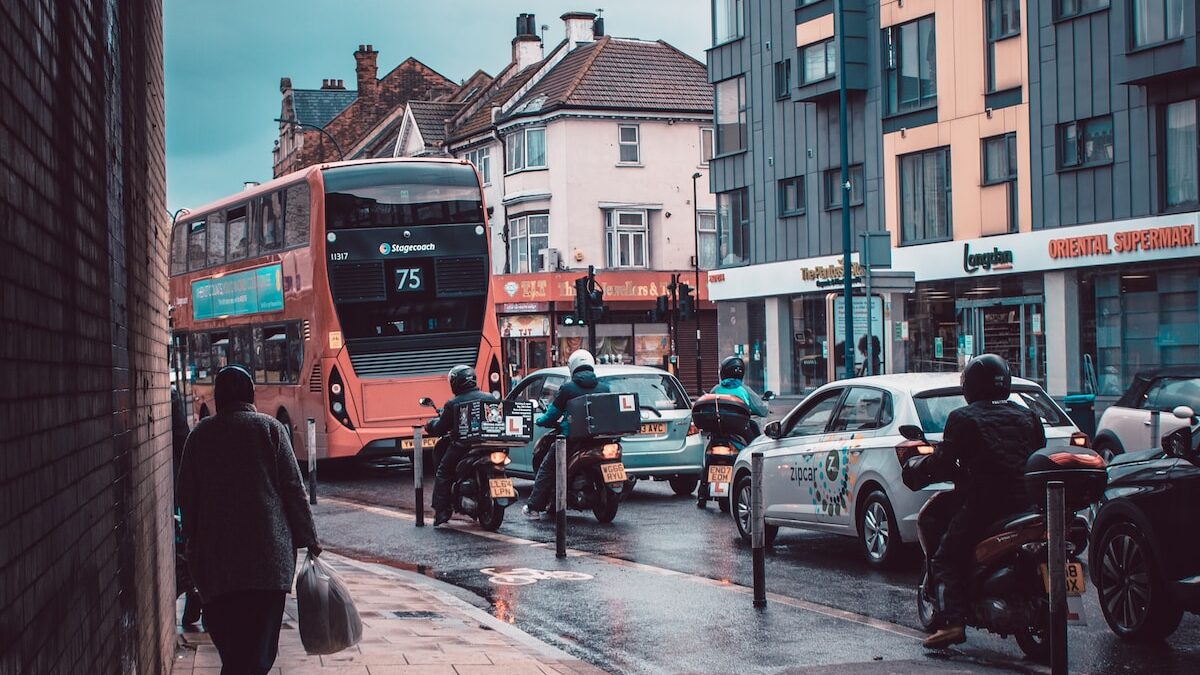
In contrast to the United States, lane filtering is more widely accepted and practiced in Europe and Canada. Many European countries, including France, Italy, Spain, and Germany, have legalized lane filtering. However, the rules and regulations regarding lane filtering vary from country to country. For example, in France, lane filtering is legal only when traffic is stopped, while in Italy, it is legal when traffic is moving at less than 30 km/h.
In Canada, lane filtering is currently illegal in all provinces except for British Columbia. However, the province has not yet established any specific rules or regulations for lane filtering, leaving it up to the discretion of individual police officers.
Overall, the legal status of lane filtering varies depending on the state or country. While it is legal in some places, it is illegal in others. Motorcyclists should check their local laws and regulations before engaging in lane filtering to avoid any legal consequences.
Lane Filtering vs. Lane Splitting
Lane filtering and lane splitting are two terms that are often used interchangeably, but they refer to different practices. Lane splitting refers to the act of riding a motorcycle between two lanes of moving traffic that are traveling in the same direction. On the other hand, lane filtering refers to the practice of riding a motorcycle between two lanes of slow-moving or stopped traffic.
One of the main differences between the two practices is the speed at which they are performed. Lane splitting is usually done at highway speeds, while lane filtering is done at much slower speeds, often in stop-and-go traffic. Lane filtering is legal in some states, while lane splitting is illegal in most states.
Lane splitting is often used by motorcyclists to avoid traffic congestion, reduce travel time, and increase safety by avoiding being rear-ended by a car. However, it can also be dangerous if not done properly. Lane filtering, on the other hand, is often used by motorcyclists to move through traffic more efficiently and safely, especially in urban areas with heavy traffic.
Another difference between the two practices is the level of acceptance by other motorists. Lane splitting is often seen as dangerous and illegal by other motorists, while lane filtering is generally accepted as a legitimate practice by other motorists, especially in areas where it is legal.
In conclusion, while lane filtering and lane splitting are often used interchangeably, they refer to different practices that are performed at different speeds and have different levels of acceptance by other motorists. Motorcyclists should be aware of each practice’s legal and safety considerations and use them appropriately.
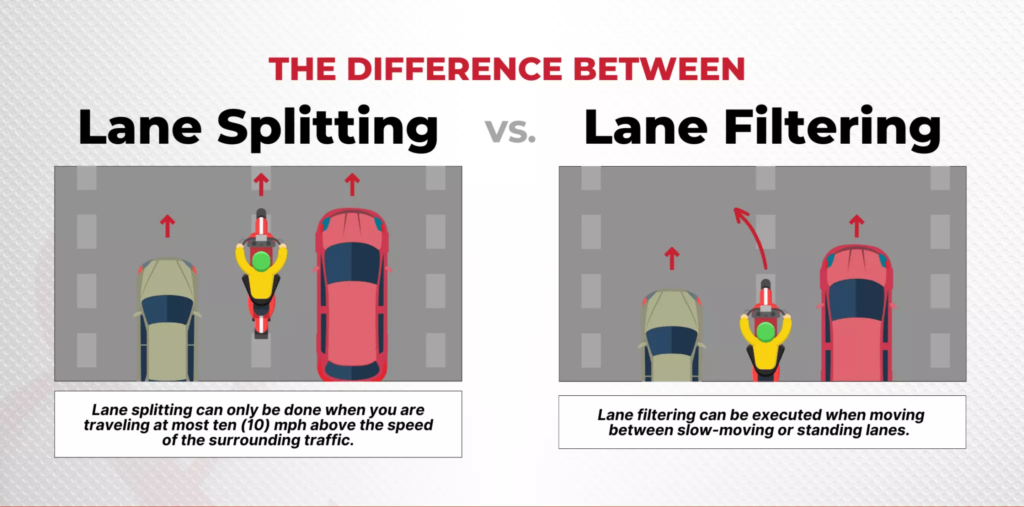
Safety and Lane Filtering
Lane filtering is a practice where a motorcyclist moves between lanes and rows of stopped or slow-moving vehicles on the right side of the lane. While lane filtering can reduce commuting times and increase fuel efficiency, it also carries risks that need to be considered. This section will discuss the safety aspects of lane filtering and provide information on how to minimize the risks involved.
Motorcyclist Safety
Lane filtering carries a nearly four-fold increase in crash risk compared to non-filtering motorcycle travel. This is because lane filtering exposes motorcyclists to a range of hazards such as driver inattention, limited visibility, and unexpected movements from other road users.
To minimize the risks involved, motorcyclists should ensure that they have the necessary skills and experience to undertake lane filtering safely. They should also wear appropriate safety gear, such as helmets, gloves, and protective clothing. Additionally, motorcyclists should maintain a safe speed and distance from other road users and avoid filtering in hazardous conditions such as wet or slippery roads.
Motorists Awareness
Motorists need to be aware of lane filtering and take appropriate action to minimize the risks involved. They should be aware that motorcyclists may filter between lanes and rows of stopped or slow-moving vehicles and should not try to block or impede their progress.
Motorists should also be aware that lane filtering is legal in some states and countries and that they should expect to encounter motorcyclists filtering in these areas. They should check their mirrors and blind spots regularly and avoid sudden movements that may startle or endanger motorcyclists.
In conclusion, lane filtering can be a safe and efficient way for motorcyclists to navigate traffic, but it also carries risks that need to be considered. Motorcyclists and motorists need to be aware of the risks involved and take appropriate action to minimize them. By following the guidelines outlined in this section, motorcyclists and motorists can help ensure that lane filtering is a safe and efficient way to navigate traffic.
Impact of Lane Filtering on Traffic
Lane filtering is a common practice among motorcyclists, where they ride between lanes of stopped or slow-moving traffic to reach their destination faster. While it may seem like a dangerous maneuver, there are arguments in favor of lane filtering as a way to reduce traffic congestion and improve traffic flow.
According to a study published in the journal Accident Analysis and Prevention, lane filtering can reduce traffic congestion by up to 50%. This is because motorcycles take up less space on the road than cars, and allowing them to move between lanes, frees up space for other vehicles to move as well. This can help reduce the number of vehicles on the road and improve traffic flow.
However, there are also concerns that lane filtering can be dangerous, especially if not done properly. For example, if a motorcyclist filters through traffic at high speeds, it can increase the risk of accidents and injuries. Additionally, lane filtering can be disruptive to other drivers who may not be expecting a motorcycle to pass them.
To address these concerns, some states have implemented laws and regulations around lane filtering. For example, in California, lane filtering is legal but only under certain conditions, such as when traffic is moving at 30 mph or less. Other states, such as Utah, have recently passed laws allowing lane filtering but with strict guidelines around how it can be done safely.
Overall, the impact of lane filtering on traffic is complex and depends on a variety of factors. While it can help reduce congestion and improve traffic flow, it also carries risks and can be disruptive to other drivers. As such, it is important for motorcyclists to follow laws and regulations around lane filtering and to do so in a safe and responsible manner.
Speed Considerations in Lane Filtering
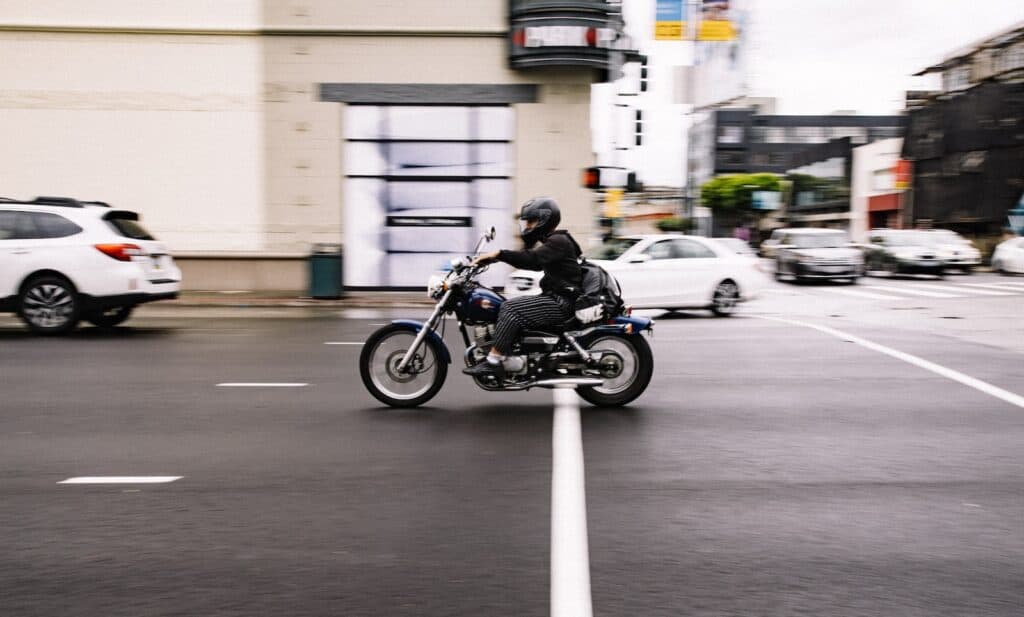
Lane filtering can be a time-saving and efficient way for motorcyclists to navigate through traffic. However, it is important to consider speed when filtering between lanes.
In California, motorcyclists are permitted to filter or split lanes when the posted speed limit is 30 mph or less and no more than 10 mph faster than surrounding traffic. When splitting lanes at 40 mph or less, riders must be traveling no more than 10 mph faster than traffic flow and never faster than 30 mph. These guidelines are in place to ensure the safety of both the motorcyclist and surrounding drivers.
It is important to note that speed limits and traffic flow can vary depending on the location and time of day. Motorcyclists should always be aware of their surroundings and adjust their speed accordingly.
When filtering between lanes, motorcyclists should also be mindful of their own skill level and the capabilities of their motorcycles. Filtering at high speeds or in heavy traffic can be dangerous and should be avoided.
In summary, when considering lane filtering, motorcyclists should always keep speed in mind. Adhering to posted speed limits and adjusting speed to traffic flow can help ensure a safe and efficient ride.
Responsibility and Liability in Lane Filtering
Lane filtering can be a controversial practice, and it is important for riders to understand their responsibilities and liabilities when engaging in this activity. While lane filtering is legal in some states, it is important to note that riders may still be held liable for any accidents or injuries that occur while filtering.
In terms of responsibility, it is up to the rider to ensure that they are filtering safely and responsibly. This means being aware of their surroundings, maintaining a safe speed, and avoiding sudden or erratic movements. Riders should also be aware of any specific laws or regulations in their state regarding lane filtering, such as speed limits or restrictions on which types of roads are open to filtering.
Regarding liability, riders may be held responsible for any accidents or injuries that occur while filtering. This could include damage to other vehicles, or property, or injuries to other drivers or passengers. In some cases, riders may also be held liable for their own injuries if they were not wearing appropriate safety gear or were engaging in reckless behavior.
Insurance adjusters may also play a role in determining liability in the event of an accident involving lane filtering. In some cases, adjusters may look at factors such as the speed of the rider, the actions of other drivers on the road, and the specific circumstances surrounding the accident when determining who is at fault.
Overall, it is important for riders to understand their responsibilities and liabilities when engaging in lane filtering. By being aware of the risks and taking appropriate safety precautions, riders can help minimize the risk of accidents or injuries while filtering.
Studies on Lane Filtering
Lane filtering is a practice that has been a topic of interest among researchers and policymakers in recent years. Several studies have been conducted to investigate the safety and effectiveness of lane filtering.
One study conducted by the University of California Berkeley found that lane filtering can be safe when practiced correctly. The study analyzed data from over 6,000 motorcycle accidents and found that lane filtering can reduce the risk of accidents in certain situations. The study also found that lane filtering can help reduce traffic congestion and improve overall traffic flow.
Another study published in the Journal of Advanced Transportation found that the behavior of motorcycle riders during lane filtering can be influenced by various factors, including the design of the road and the behavior of other drivers. The study also found that lane filtering can be an effective way to reduce the risk of rear-end collisions.
Overall, the studies suggest that lane filtering can be safe and effective when practiced correctly. However, more research is needed to fully understand the benefits and risks of the practice. It is important for policymakers to consider the findings of these studies when developing laws and regulations related to lane filtering.
FAQ
What is the lane filtering?
Lane filtering refers to the practice of motorcyclists riding between lanes of slower moving or stopped vehicles, especially in congested traffic conditions. It is often done to move forward more quickly during heavy traffic and is typically practiced at intersections or in stop-and-go traffic.
What’s the difference between lane splitting and filtering?
Both lane splitting and lane filtering involve a motorcyclist moving between lanes of traffic. The primary difference is the context:
Lane Splitting: This is when a motorcyclist rides between lanes of moving traffic that is proceeding in the same direction. It can be done at higher speeds and on open roads.
Lane Filtering: This generally refers to moving between lanes of slow-moving or stationary traffic, often at intersections or in congested conditions. It is typically done at lower speeds.
What are the benefits of lane filtering?
The benefits of lane filtering include:
Reducing Traffic Congestion: Motorcycles can move forward, thus occupying less space in the traffic queue.
Increased Safety for Motorcyclists: By allowing motorcyclists to move out of stationary traffic, they are less likely to be rear-ended by inattentive drivers.
Efficiency: Motorcyclists can reach their destinations faster during peak traffic conditions.
Reduced Engine Overheating: Motorcycles, especially air-cooled ones, benefit from movement to prevent overheating in stop-and-go traffic.
Is lane splitting safe?
The safety of lane splitting largely depends on how it is executed. When done responsibly and at safe speeds, it can be a safe practice. Studies, such as those conducted by the University of California, Berkeley, have indicated that lane splitting can be safe if done at speeds not excessively faster than surrounding traffic and if motorcyclists are attentive and cautious. However, high-speed lane splitting or weaving aggressively between cars can be dangerous.
Is there a difference between lane splitting, lane filtering, and lane sharing?
Yes, there are differences:
Lane Splitting: As mentioned, this involves riding between lanes of moving traffic.
Lane Filtering: Refers to moving through stationary or slow-moving traffic, typically at intersections or in heavy congestion.
Lane Sharing: This refers to two motorcycles sharing the same lane side by side. It’s different from the other two practices as it doesn’t involve moving between lanes of cars.
Where is lane splitting legal in the U.S.?
Only a handful of states have legalized lane filtering. California was the first state to legalize lane filtering in 2016, but it is still subject to certain conditions. Utah followed suit in 2019 and became the second state to legalize lane filtering. In early 2021, Montana also enacted a law legalizing lane filtering. Virginia, Arizona, Oregon, Hawaii, and Washington are currently considering legalizing lane filtering.

